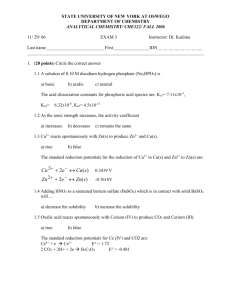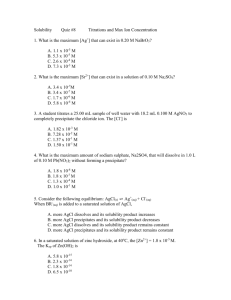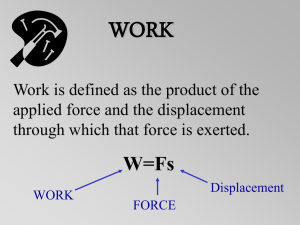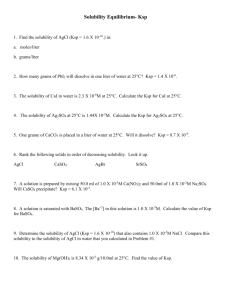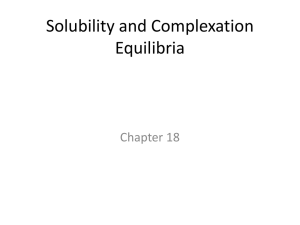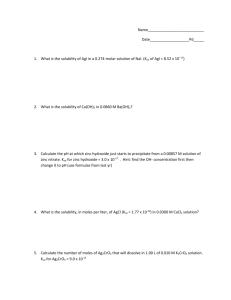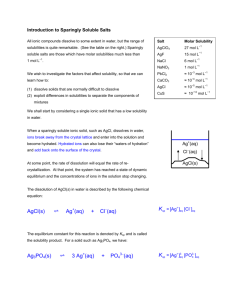Problem Set 1
advertisement
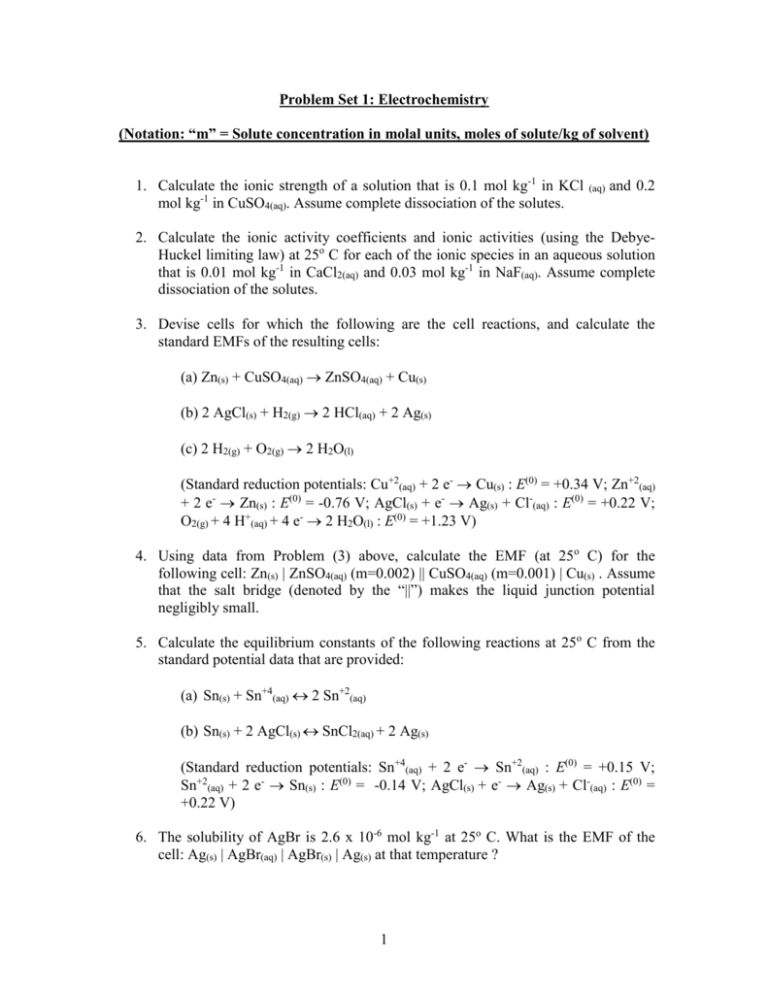
Problem Set 1: Electrochemistry (Notation: “m” = Solute concentration in molal units, moles of solute/kg of solvent) 1. Calculate the ionic strength of a solution that is 0.1 mol kg-1 in KCl mol kg-1 in CuSO4(aq). Assume complete dissociation of the solutes. (aq) and 0.2 2. Calculate the ionic activity coefficients and ionic activities (using the DebyeHuckel limiting law) at 25o C for each of the ionic species in an aqueous solution that is 0.01 mol kg-1 in CaCl2(aq) and 0.03 mol kg-1 in NaF(aq). Assume complete dissociation of the solutes. 3. Devise cells for which the following are the cell reactions, and calculate the standard EMFs of the resulting cells: (a) Zn(s) + CuSO4(aq) ZnSO4(aq) + Cu(s) (b) 2 AgCl(s) + H2(g) 2 HCl(aq) + 2 Ag(s) (c) 2 H2(g) + O2(g) 2 H2O(l) (Standard reduction potentials: Cu+2(aq) + 2 e- Cu(s) : E(0) = +0.34 V; Zn+2(aq) + 2 e- Zn(s) : E(0) = -0.76 V; AgCl(s) + e- Ag(s) + Cl-(aq) : E(0) = +0.22 V; O2(g) + 4 H+(aq) + 4 e- 2 H2O(l) : E(0) = +1.23 V) 4. Using data from Problem (3) above, calculate the EMF (at 25o C) for the following cell: Zn(s) | ZnSO4(aq) (m=0.002) || CuSO4(aq) (m=0.001) | Cu(s) . Assume that the salt bridge (denoted by the “||”) makes the liquid junction potential negligibly small. 5. Calculate the equilibrium constants of the following reactions at 25o C from the standard potential data that are provided: (a) Sn(s) + Sn+4(aq) 2 Sn+2(aq) (b) Sn(s) + 2 AgCl(s) SnCl2(aq) + 2 Ag(s) (Standard reduction potentials: Sn+4(aq) + 2 e- Sn+2(aq) : E(0) = +0.15 V; Sn+2(aq) + 2 e- Sn(s) : E(0) = -0.14 V; AgCl(s) + e- Ag(s) + Cl-(aq) : E(0) = +0.22 V) 6. The solubility of AgBr is 2.6 x 10-6 mol kg-1 at 25o C. What is the EMF of the cell: Ag(s) | AgBr(aq) | AgBr(s) | Ag(s) at that temperature ? 1 7. The standard EMF (E(0)cell) of the cell: Ag(s) | AgI(s) | AgI(aq) | Ag(s) is +0.95 V at 25o C. Calculate the solubility constant of AgI at this temperature. The solubility constant is denoted: Ksp, and is defined as the product: Ksp = a Ag a I , where the activity coefficients refer to the Ag+ and I- ions for a saturated aqueous solution of AgI. From the solubility constant, estimate the solubility of AgI in water at this temperature (in moles of AgI per kg of water). 8. Show that the solubility (denoted S) of a sparingly soluble 1:1 salt (e.g., AgCl), in water at 25o C, is related to the solubility constant for the salt (denoted Ksp) by: S K sp e1.172 S . 9. Given the standard reduction potentials: AgCl(s) + e- Ag(s) + Cl-(aq) : E(0) = +0.22 V; Zn+2(aq) + 2 e- Zn(s) : E(0) = -0.76 V, use the Debye-Huckel limiting law to estimate the EMF of the cell: Zn(s) | ZnCl2(aq) (m = 0.0102), AgCl(s) | Ag(s) at 25o C. 2
